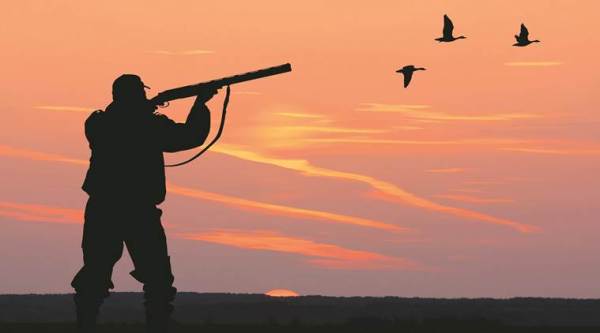Down in jungleland: Once I was a hunter
Many conservation stories begin with a change of heart.
 Picture is used for representational purposes
Picture is used for representational purposes
It’s one of the so-called inalienable laws of nature: kill or be killed, eat or be eaten and we, the human species, have obeyed it diligently ever since we’ve been around. For millions of years, our whole attitude towards all other living creatures (including ourselves) has been just that. In fact, we thought we could only survive if we “conquered” nature. And that hunting was a noble, courageous profession and pastime. My own interest in nature and animals was sparked by this, and the adventures of people like Jim Corbett and the hugely psychedelic Kenneth Anderson. Back in the swinging Sixties, every guy wanted to be a macho hunter with a rifle slung over his shoulder.
I too had a gun slung over my shoulder, not an elephant gun or a 303, but one of those 0.177 (I think it was) airguns that shot small lead pellets. During holidays, I prowled around popping off at this and that and missing everything. On one particular vacation, I had an uncle’s cocker spaniel accompany me and the happy dog would prance around barking encouragement, never once showing any disappointment at not having to retrieve anything — because nothing ever fell out of the trees I aimed at. For a long time, one of my favourite films was Hatari (starring John Wayne and Red Buttons, if I remember correctly). It was about a bunch of redneck animal trappers catching wild animals in Africa to send to circuses and zoos around the world (I think). I couldn’t get enough of the chase scenes in the film, what with Wayne perched on his seat on the mudguard of the 4WD, leaning forward with the pole and noose with which to snare the snorting rhino galloping ahead. A large part of the pleasure, of course, was just watching these battered ex WW II 4WDs (no, apparently they were not Land Rovers) bounce and barrel through the dust or mud — again conquering nature as it were — which, of course, climaxed when the furious rhino suddenly swiveled around and charged at the vehicle, adding yet another magnificent dent to the bodywork or actually flipping it over. But even then, there was a vague sense of unease, when at last the poor beast was captured, with ropes holding it down, snorting and frothing as it was shoved into its tiny traveling crate.
Any number of modern-day conservationists (especially those specialising in big animals like tigers and elephants) started off their careers as hunters and then had a sudden change of heart — a hunter’s midlife crisis — you could call it. I had mine (I was nowhere near mid-life then, nor am I now!) back in Mumbai when, one afternoon. I actually managed to knock a garden lizard off the branch it was sunning itself on, with my airgun, from our first floor verandah. The lizard tumbled to the ground and I rushed downstairs to check on my “kill”.
The damn thing hadn’t died, so naturally, like any noble hunter, I had to deliver the coup de grace. It felt a bit disturbing to be standing over the poor creature with the barrel six inches from its head, but well a guy’s gotta do what a guy’s gotta do. So I pulled the trigger. The blasted gun jammed and refused to fire thereafter, like it was sitting on some ruddy dharna. Now what? I was certainly not going to behead the lizard with a penknife or hit it with a stick or stone, like Bear Grylls and his ilk and then eat it raw (or even roasted on a stick over a fire). The lizard decided it had made its point — and mercifully expired. But I was again at a loss over what to do with it. I was not going to mount its head on my bedroom wall as a “trophy”, or have it stuffed. (And who wanted a dead head looking down at you, reminding you of what you’d done to it and its family?) So, in the end, the creature had really died for no reason at all; it seemed a pretty pointless exercise after all. It seemed even more futile when, at some point, I accidentally shot myself with the damn airgun. (Actually, the pellet ricocheted off a nearby fence and hit me in the shin, making me hop around on one leg.) Not a nice thing to do to any living creature, I thought.
But no, the blood-lust would still not be quelled! And, at 16 or 17, there are any numbers of people you’d like to knock off. So I made tiny figurines out of plasticine and used them as targets. My sculpting skills left a lot to be desired, so the targets didn’t resemble who they were supposed to be, but it was still very satisfying to see what a 0.177 pellet could do to the head or chest of one such. But one change had taken place: henceforth, I would never again aim anything but a camera at any other living creature. Again, this has happened with many hunters-turned-conservationists, but it really is time that we change that law of nature from “kill or be killed”, to “save and be saved” if only because that’s the writing on the wall now — and if we don’t obey it, our children and grandchildren will damn us to eternity.
At great risk of copyright infringement, I’m now going to reproduce a short story written by a little boy, and sent to me by my sister, which says it best:
Once there was a lion. He ate everyone up. Then he ate himself up.
Ranjit Lal is an author, environmentalist and birdwatcher
Photos


- 01
- 02
- 03
- 04
- 05

























